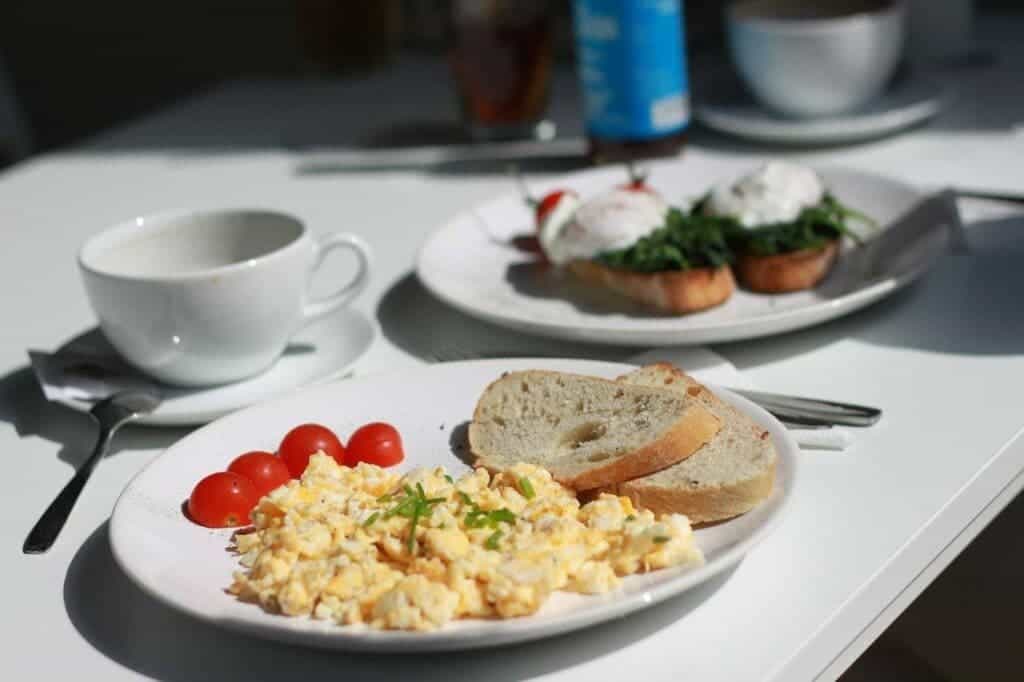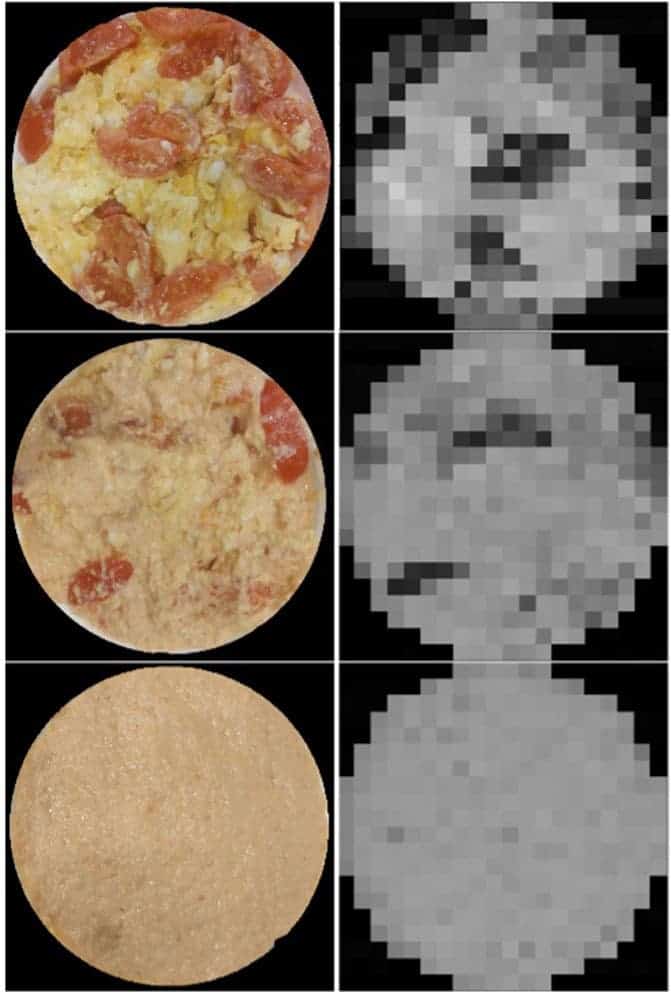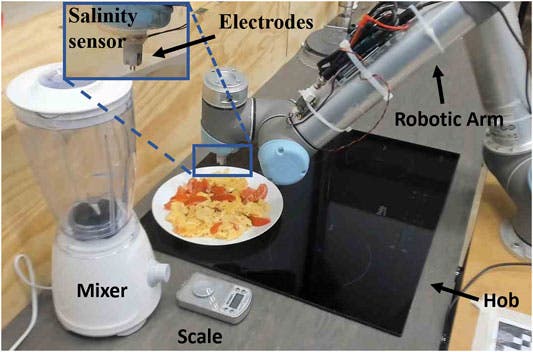Robots may soon be coming for your job as well — if you happen to be a chef.

Researchers from the University of Cambridge, in a collaborative project with engineers from domestic appliance manufacturer Beko, have trained a robot that is capable of tasting what it’s cooking — and determining whether what it’s tasting is actually any good. So far, the cook-bot can only sense and appreciate the saltiness levels of a dish at different stages of the chewing process, but the results lay the groundwork for more flavors and tastes to be added to the robot’s repertoire.
Autotaste
“Most home cooks will be familiar with the concept of tasting as you go — checking a dish throughout the cooking process to check whether the balance of flavors is right,” said Grzegorz Sochacki from Cambridge’s Department of Engineering, the paper’s first author. “If robots are to be used for certain aspects of food preparation, it’s important that they are able to ‘taste’ what they’re cooking.”
“When we taste, the process of chewing also provides continuous feedback to our brains,” said co-author Dr. Arsen Abdulali, also from the Department of Engineering. “Current methods of electronic testing only take a single snapshot from a homogenized sample, so we wanted to replicate a more realistic process of chewing and tasting in a robotic system, which should result in a tastier end product.”
The team’s work paves the way towards the development of semi- or fully-automated food preparation devices by helping machines understand whether the taste of what they’re cooking is any good. And, part of what makes a meal enjoyable isn’t based on taste at all, but rather properties such as changes in texture and flavor. The appearance, smell, texture, and temperature of food also impact our perception of a dish’s taste. As food interacts with our saliva and the enzymes it contains, our perception of the flavor changes further, both due to chemical reactions between the two, and due to the fact that saliva ferries molecules between the food and receptors on our tongue. An item’s texture will also change as it is being chewed, changing the experience as it unfolds.
Apart from this, taste is also a very subjective experience, and one dish that someone might love to bits can be completely off-putting to somebody — spicy dishes are a great example.
For the study, the team worked with a robot chef that had previously been trained to cook omelets based on feedback it received from human tasters. The experiment involved having this robot sample nine variations of a simple dish of scrambled eggs and tomatoes at three different stages of the chewing process. Based on these readings, the bot created “taste maps” of each variation of the dish.

According to the team, this process of sampling dishes at multiple points in the chewing process had a significant effect on the robot’s ability to quickly and accurately assess the saltiness of the dish compared to other electronic tasting technologies that use a single sample.
In order to allow the robot to imitate tasting in the same ways our bodies handle them, the team fitted it with a conductance probe, which acts as a salinity sensor. They then prepared scrambled eggs and tomatoes in various ratios, with precisely-measured quantities of salt added in, and ‘fed’ them to the robot. Each tasting took just a few seconds to perform. To imitate the effect of chewing, the team put the foods in a blender and had the robot taste the resulting dish again.

“We needed something cheap, small and fast to add to our robot so it could do the tasting: It needed to be cheap enough to use in a kitchen, small enough for a robot, and fast enough to use while cooking,” said Sochacki.
Collating the results of the readings at different points throughout the chewing process produced the taste map of each dish.
The experiment was more of a proof-of-concept, the researchers explain, to show that through the imitation of the human chewing and tasting process, robots will eventually be able to estimate how appetizing food is in real time and be able to tailor it to individual tastes — thus making them much better and more reliable cooks.
“When a robot is learning how to cook, like any other cook, it needs indications of how well it did,” said Abdulali. “We want the robots to understand the concept of taste, which will make them better cooks. In our experiment, the robot can ‘see’ the difference in the food as it’s chewed, which improves its ability to taste.”
As a manufacturer of home appliances, Beko has a vested interest in furthering robots’ skills as cooks. The company envisions robot cooks to have a ‘major role’ in busy households or assisted living homes in the future, which is why they collaborated on this project.
Going forward, the researchers want to improve the robot’s tasting sensitivity and add more tastes to its repertoire (such as ‘sweet’ or ‘oily’) to expand its abilities as a chef.
The paper “Mastication-Enhanced Taste-Based Classification of Multi-Ingredient Dishes for Robotic Cooking” has been published in the journal Frontiers in Robotics and AI.


